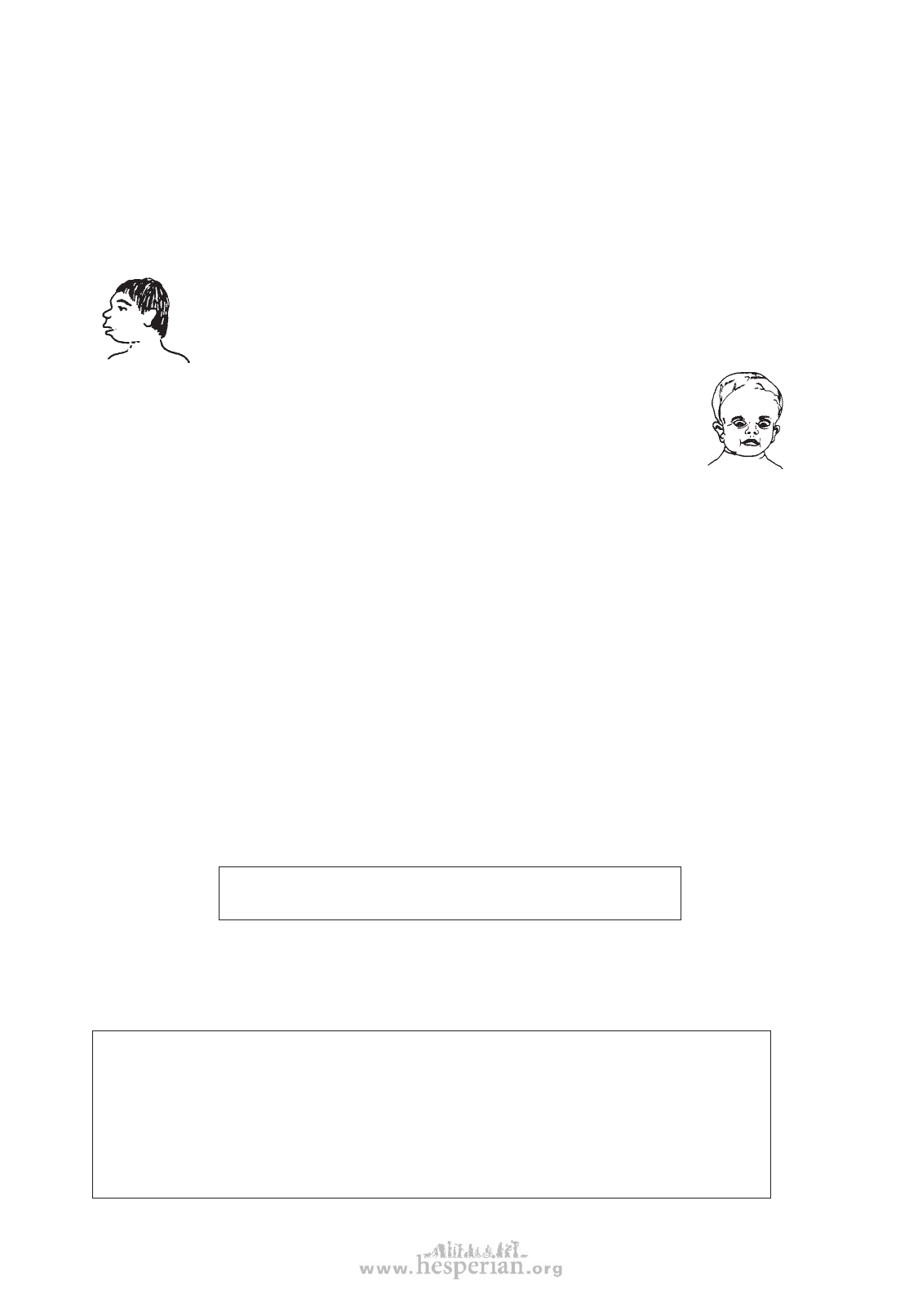
36 chapter 4
EVALUATION OF A CHILD WHOSE
DEVELOPMENT IS SLOW
For the child who cannot do as much as other children do at the same age, a special
developmental evaluation may be helpful. Additional information about the child’s mother
during pregnancy, or any difficulties during or after birth may explain possible causes.
Measurement of the distance around the head may show possible causes of problems or
other important factors. Repeated head-size measurements (once a month at first) may
tell us even more.
For example, a child who has had meningitis (brain infection) at age 1.
and whose head almost stops growing from that age on, will probably
remain quite mentally slow. We should not expect a lot. However, if
the child’s head continues to grow normally, the child may have better
possibilities for learning and doing more (although we cannot be sure).
A child who is born with a ‘sack on the back’ (spina bifida, see p. 167) may
have a head that is bigger than average. If the head continues to grow rapidly,
this is a danger sign (see p. 41 and 169). Unless the child has surgery, she may
become severely mentally slow or die. If, however, the monthly measurements
show that the head has stopped growing too fast, the problem may have
corrected itself. She may not need surgery.
RECORD SHEET 4, on page 41, covers additional questions relating to child development,
and includes a chart for recording and evaluating head size.
To help the child who is developmentally delayed, you will first want to evaluate her
level of physical and mental development. Chapter 34, pages 287 to 300, explains ways
to do this.
You can use the Child Development Chart on pages 292 and 293 to find a child’s
developmental level, to plan her step-by-step activities, and to evaluate and record her
progress. We have marked this 2-page chart, RECORD SHEET 6.
RECORD SHEETS
On the next 5 pages are the sample RECORD SHEETS that we discussed on p. 22.
You are welcome to copy and use them. However, they are not perfect. They were
developed for use by the village rehabilitation team in Mexico, and we are still trying to
improve them. Before you make copies, we suggest that you adapt them to meet the
needs of your area.
Be sure you have copies made of the RECORD SHEETS
you will need before you need to use them.
In addition to the 4 RECORD SHEETS here, you may also want copies of RECORD
SHEET 5 “Evaluation of Progress,” page 50, and RECORD SHEET 6, “Child
Development Chart,” pages 292 and 293.
Note on RECORD SHEET 1 (CHILD HISTORY):
The box at the top of RECORD SHEET 1 is to be filled out after you examine the child. It gives
brief, essential information. This will make it easier to find out which disabilities you have seen
most often, and to check on what you still need to do for different children.
The last few questions on page 2 of RECORD SHEET 1 are for a study PROJIMO is doing on
medical causes of disability. Adapt them to study special concerns in your area.
Disabled village Children